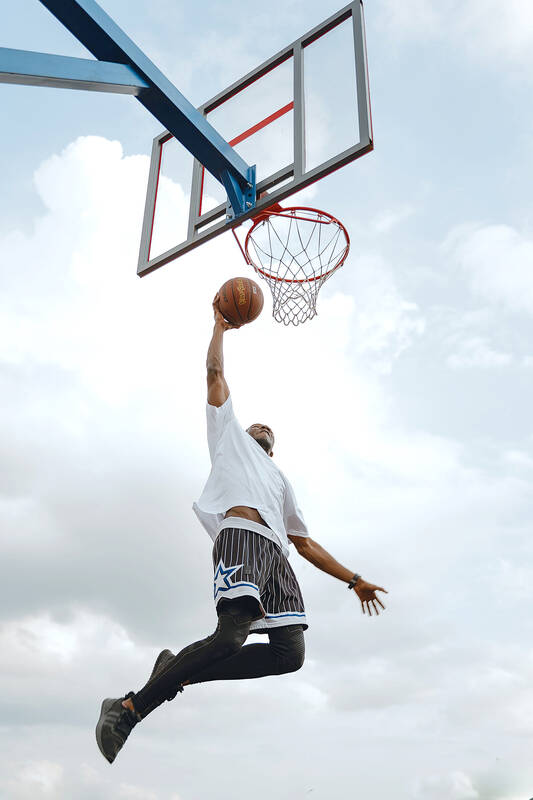In a thrilling basketball match, LeBron James attempts a shot, but it’s blocked by Stephen Curry, prompting gasps from the crowd. Moments later, Curry dribbles past the Lakers defense and sinks an incredible three-pointer, igniting cheers throughout the arena. The game is filled with heart-pounding moments, leaving fans in awe of the outstanding performances by these basketball superstars. There’s no denying that basketball is an intense and energetic game, but have you ever wondered how it came to be?
Basketball was invented in 1891 by James Naismith, a gym teacher at the YMCA Training School in Springfield, Massachusetts, US. He aimed to keep students active during the winter months when outdoor sports like baseball and American football were impractical due to snow. Playing these sports in an indoor environment also presented its own set of dangers. Naismith recalled a childhood game of throwing stones that could engage students in physical exercise safely. He put baskets on either side of the gym and devised a game in which students scored by throwing a soccer ball into them. When students asked about the new game’s name, Naismith explained that the objective was to put the ball into the baskets. Thus “basketball” came into existence. This innovative sport quickly gained popularity.
As basketball continued to grow, leagues sprang up worldwide, making it one of the most beloved sports globally. The biggest of all the leagues is the National Basketball Association (NBA), which attracts top talent from all over the world. Moreover, basketball has diversified into various forms, enhancing its enjoyment and distinctiveness. For instance, water basketball is played in pools, wheelchair basketball allows the disabled to enjoy the delights of the game, and 3x3 basketball breaks away from the traditional team size. Nowadays, basketball represents more than just a sport. It’s a culture that encourages all enthusiasts to overcome obstacles and pursue greatness through a ball and a basket.

Photo: Wikimedia Commons / 照片:維基共享資源提供
在一場激動人心的籃球比賽中,勒布朗.詹姆斯試圖出手,但被史蒂芬.柯瑞擋住,引起觀眾的驚嘆喘息。片刻之後,柯瑞越過湖人隊的防守,投進了一個令人難以置信的三分球,引爆了整個體育館的歡呼聲。比賽充滿了令人心跳加速的時刻,讓球迷對這些籃球巨星的出色表現感到驚嘆不已。毫無疑問,籃球是一個激烈而充滿活力的運動,但你是否曾想過它是如何誕生的呢?
籃球是由詹姆斯.內斯密斯於西元1891年在美國馬薩諸塞州斯普林菲爾德的YMCA 培訓學校創造的,他是一名體育教師。他的目標是在冬季,當室外運動如棒球和美式足球因雪而無法實際執行時,仍讓學生保持活躍。在室內環境中進行這些運動也存在一系列危險。內斯密斯回憶起童年玩的一個投擲石頭的遊戲,可以讓學生們安全地參與體育鍛煉。他在體育館的兩側設置了籃筐,並設計了一個遊戲,讓學生透過將足球投進籃筐來得分。當學生們詢問此新遊戲的名稱時,內斯密斯解釋目標是將球投進籃筐。因此,「籃球」應運而生。這項創新的運動迅速受到了歡迎。
隨著籃球的不斷發展,各地湧現了籃球聯盟,使其成為全球最受喜愛的運動之一。其中最大的聯盟是國家籃球協會(NBA),吸引了來自世界各地的頂級球員。此外,籃球已多樣化為各種形式,增加了其樂趣和獨特性。例如,水上籃球在游泳池中進行,輪椅籃球讓殘障人士享受到了這項運動的樂趣,三對三籃球則打破了傳統的隊伍規模。如今,籃球不僅是一項運動。它是一種文化,鼓勵所有熱愛它的人透過一個球和一個籃筐克服障礙,追求偉大。
MORE INFORMATION
ignite v. 激起
impractical adj. 不切實際的
the disabled 殘疾人士
break away 脫離
enthusiast n. 熱衷者
KEY VOCABULARY
1. gasp n. 喘息;倒抽一口氣
Sophia let out a gasp when she saw the ghost in the haunted house.
蘇菲亞在鬼屋裡看到幽靈時倒吸了一口氣。
2. arena n. (運動或表演)場地
Fans filled the big sports arena, eager to see their team win the basketball game.
粉絲們湧入了大型體育館,迫不及待地想看他們的球隊贏得籃球比賽。
3. recall v. 回想起
The smell of fresh-baked bread always recalls memories of my grandmother’s kitchen.
新鮮烤麵包的香氣總使我想起我祖母的廚房。
4. devise vt. 設計;想出
The engineers worked hard to devise a more efficient way to generate electricity.
工程師們努力地設計出更高效率的發電方式。
5. objective n. 目標;目的
It’s essential to define your objectives before starting any business venture.
在開始任何商業冒險之前,定義你的目標至關重要。
6. league n. 聯盟;聯賽
MLB (Major League Baseball) is the most famous baseball league in the world.
美國職業棒球大聯盟是世界上最著名的棒球聯盟。
7. beloved adj. 受喜愛的
The beloved pet dog brought joy and companionship to the family for many years.
這隻深受喜愛的寵物狗為這家庭帶來多年的歡樂與陪伴。
8. association n. 協會
The association of doctors organized a medical conference to discuss recent advancements.
這醫生協會組織了一場醫學會議來討論最新的進展。
9. obstacle n. 障礙;阻礙
Winnie’s lack of finances is a significant obstacle to her success.
溫妮財務上的不足是她前往成功的一個重大阻礙。
學習音檔: https://magazine.english4u.net/Magdata/menu/4blxs
《空中美語》雜誌APP免費下載: https://www.english4u.net/apps/index.aspx
免費收聽當月《空中美語》雜誌課文朗讀及解析 !
文章由AMC空中美語授權使用: https://www.english4u.net

A: What’s the theme of the 2025 Taiwan Lantern Festival’s main lantern? B: The theme is “Paradise,” and the main lantern is a snake-shaped “infinity” symbol that features a lighting show every half an hour. A: Cool, I heard that there are over 300 lanterns. B: There are even giant lanterns in the shape of Pikachu and some other popular Pokemon characters. A: Let’s go now. A: 2025台灣燈會主燈的主題是什麼? B: 主題是「無限樂園」!主燈的造型則是蛇形的數學「無限號」,主燈每半小時還有一次燈光秀。 A: 酷喔,聽說總共有300多件花燈作品。 B: 甚至還有皮卡丘和其他熱門寶可夢角色的巨型花燈呢。 A: 哇我們現在就出發吧! (By Eddy Chang, Taipei Times/台北時報張聖恩)

After steel and aluminum, US President Donald Trump has set his sights on slapping 25 percent tariffs on semiconductors, cars and pharmaceuticals. Trump has already slapped additional 10 percent tariffs on goods from China and has also threatened tariffs on Canada and Mexico, plus ordered a study into putting into place reciprocal tariffs. Here’s a look who would be hit the hardest if US import tariffs on semiconductors, cars and pharmaceuticals go into force. SEMICONDUCTORS: ASIA IN THE CROSSHAIRS Semiconductors, or microchips, are the brains in our electronic devices and demand has soared with the development of AI, which

本文由生成式AI協作,本刊編輯編修。 Tucked away in southwestern Taiwan, Yunlin County is a treasure trove of cultural heritage, rich history, and natural beauty. From its stunning temples and glove puppetry to historical architecture and picturesque landscapes, Yunlin rewards those who venture off the beaten path. Yunlin is renowned for its flourishing temple culture. Temples in this region are not merely places of worship but also communal centers where people gather for festivals, rituals, and social functions. One of the most notable temples here is the Beigang Chaotian Temple, which was built more than 300 years ago and is dedicated to Matsu, the sea

Nestled within the heart of Taipei, National Taiwan University (NTU) contains a grand and spacious sanctuary where nature and academia come together in perfect accord. Across its expansive 111-hectare campus, NTU reveals a landscape rich with history, lush greenery, and a thoughtfully preserved ecosystem. This tranquil haven invites visitors to take their time wandering among the elegant buildings, to admire the rare plants, and to experience a space that exudes quiet inspiration. Zhoushan Road: A Gentle Prelude to NTU’s Tranquility Beginning at Gongguan MRT Station, the enchanting avenue Zhoushan Road leads visitors into NTU shaded by golden rain trees, cottonwoods, and Javanese